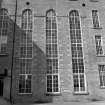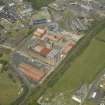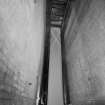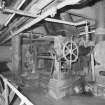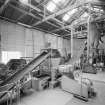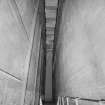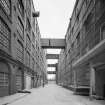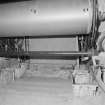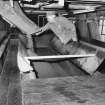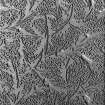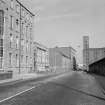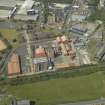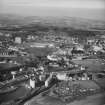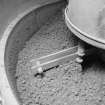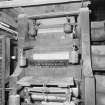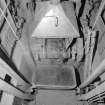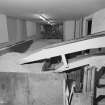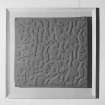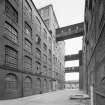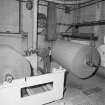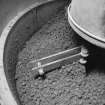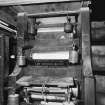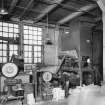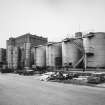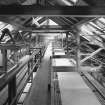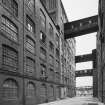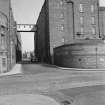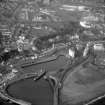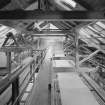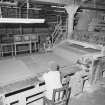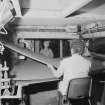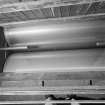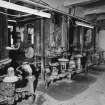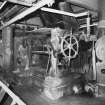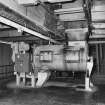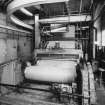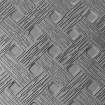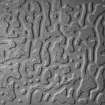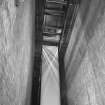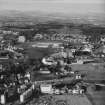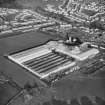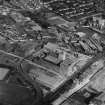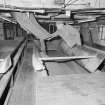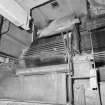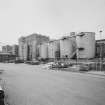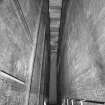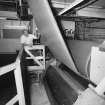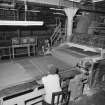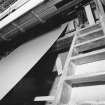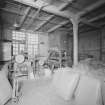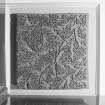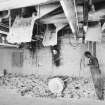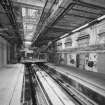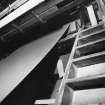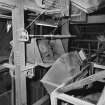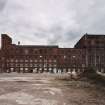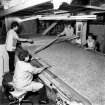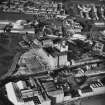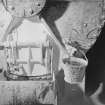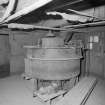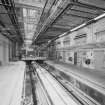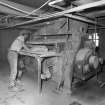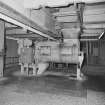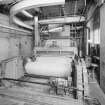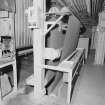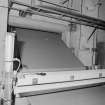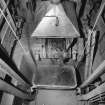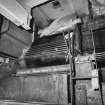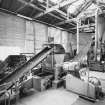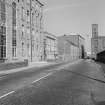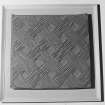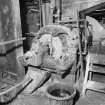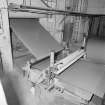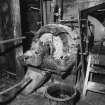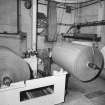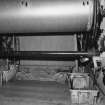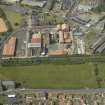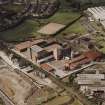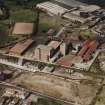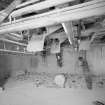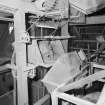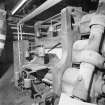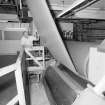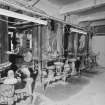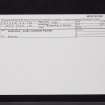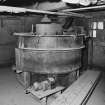Pricing Change
New pricing for orders of material from this site will come into place shortly. Charges for supply of digital images, digitisation on demand, prints and licensing will be altered.
Kirkcaldy, Den Road, Nairn's Linoleum Works
Linoleum Factory (19th Century) - (20th Century)
Site Name Kirkcaldy, Den Road, Nairn's Linoleum Works
Classification Linoleum Factory (19th Century) - (20th Century)
Alternative Name(s) Scottish Linoleum Works; Forbo Nairn Ltd; Nairn Linoleum Factory; Walton's Linoleum Factory
Canmore ID 94474
Site Number NT29SE 41
NGR NT 28599 92800
NGR Description Centred on NT 28599 92800
Datum OSGB36 - NGR
Permalink http://canmore.org.uk/site/94474
First 100 images shown. See the Collections panel (below) for a link to all digital images.
- Council Fife
- Parish Kirkcaldy And Dysart
- Former Region Fife
- Former District Kirkcaldy
- Former County Fife
NT29SE 41.00 Centred 28599 92800
NT29SE 41.01 NT 28574 92479 Office (Braehead House)
NT29SE 41.02 NT 2838 9250 Canteen
NT29SE 41.03 NT 2863 9267 Works
NT29SE 41.04 Cancelled
NT29SE 41.05 NT 2860 9280 Works
Information from RCAHMS (DE) 11 March 1996.
(Location cited as NT 287 927). Linoleum works, founded 1847 by Michael Nairn for floorcloth manufacture; started making linoleum in 1877. A large complex of stone and brick buildings, some with the characteristic tall ground floor of the classic linoleum works. The majority seem to date from the late 19th or early 20th century.
J R Hume 1976.
In 1863, an Englishman - Frederick Walton - applied successfully for a patent for the exclusive manufacture of a new floor covering material, which he called 'linoleum'. After 1877, when Walton's papent expired, production became more widespread in Britain and abroad, spreading in particular to Scotland and to the town of Kirkcaldy in West Fife.
By 1877, Kirkcaldy had established itself as the world's largest centre for the manufactiure of wax floor-cloth, and was an ideal position exploit a rapidly growing national and international market for linoleum. Within a few decades over a dozen linoleum manufacturing companies had taken root and flourished, helping to transform Kirkcaldy into the Linoleum Capital of the world.
The largest of the Kirkcaldy linoleum producers was the company of Michael Nairn, established 1828, and producing linoleum since 1877 under the auspices of Michael Barker Nairn and becoming the biggest manufacturer of linoleum in the world. The subsequent devlopment of alternative floor covering as the 20th century progressed has meant a contraction in the demand for linoleum. By 1986 Nairn's linoleum factory in Kirkcaldy was confirmed as being one of probably three surviving factories in the world producing genuine linoleum.
What is linoleum?
Essentially the making of linoleum is a culinary process involving the thorough mixing of ingredients, moulding and baking /oxidising the product and is a unique industrial process. The raw materials needed to make linoleum are:
1. Softwoods: from which the wood flour and rosin are derived.
2. Flax: from which production of the basic ingredient of linoleum is derived, LINSEED OIL.
3. Cork Oak: used to produce ground and finely graded powdered cork for the surface texture.
4. Chalk: which takes the form of an inert white powder, and acts as an inorganic filler.
5. Jute: which provides the hessian back or canvas for the linoleum.
The Process
In former times, Nairns linoleum manufacture was an entirely integrated process. Every ingredient of linoleum was processd on the enormous Kirkcaldy site. By 1986, however, the ready woven jute fabric was bought from Kirriemuir in Angus. Only the mixing of the top surface of the linoleum was made in Kirkcaldy at this time.
1. Oxidation and Cement Manufacture process
The first part of the process involves the mixing of linseed oil with some Rosin, in what is known as the oil oxidation process. By heating and stirring the mixture, while passing air through it, the oil thickens or 'bodies' at which point it is transferred to a 'smacker'. The smacker is a horizontally mounted cylindrical vessel fitted with internal rotating stirrers. The temperature of the mixture is raised further and vigoruous mixing by the stirrers helps induce further oxidisation. 'Polymerisation' of the oil occurs to the extent that the mixture becomes viscous. The smacker drops the contents through a hatchway to the floor below, which has been protected in advance from this subtsance by a layer of chalk powder. As it cools, the cement solidifies into a rigid jelly and is cut into slabs which, coated with a chalk powder, has the look of 'Turkish Delight'. Tubs of the cement lumps are stored until ready for mixing and blending.
Mixing and Blending Process
2. Mixing and Blending process
The slabs of cement are mixed with wood flour, ground cork, whiting (inorganic inert filler) and the desired colour pigments. Mixing takes place in carefully regulated batches. The mixture passes through a sequence of mixing machines and hoists. When mixed, the cement is ready for granulation. Linoleum now takes on the form of either single colour of marbling (mixing of three related coloured granules).
3. Calandering process
Linoleum composition granules are passed through two sets of two steel roll mills operating at controlled temperatures and speeds, and converting the granules to sheet form. The sheets are then pressed onto a support woven hessian with the undercoat of linoleum composition from the waste recycling process. Depending on the thickness required, several sheets at a time can in effect be pressed onto the hessian by the continuous process. The marble effect is achieved by overlaying several sheets of the composition and passing the sheets through a second calander at right angles to the direction of the first. At this point all impurities, imperfections and lumps are spotted by the naked eye and so is a labour intensive aspect of the production.
4. Seasoning
After calandering, the linoleum needs to be seasoned. The linoleum is still soft and pliable when it emerges from the continuous process. To toughen the sheets of linoleum it is hung in loops off suspended rollers in tall, heated linoleum stoves. The seasoning process can last for up to three weeks. Each stove block has up to 17 tall, narrow parrallel stove lines, which are fed in succession by an ingenious system of rollers leading from the continuous process. Each of the stove lines is at different stages of completion so that there is continuous production.
5. Surface Finishing process
The linoleum emerges from the stoves hard and leathery, but is allowed to cool, before the 'beaming out' process, in which it is rolled into jumbo-sized rolls. The linoleum is then given an extra surface coating to increase resistance to soiling and to improve its appearance.
6. Inspection and Packaging
Linoleum is laid out for inspection on long tables, cut into lengths, rolled, packed in paper and made ready for dispatch. Until dispatched, the linoleum is kept under controlled temperature conditions.
In the 1970s when a shift in the Humboldt current off South America destroyed much of the world supply of fishmeal animal feed. Cattle feed substitute provided by linseed oil drove up the price and this in turn caused problems for linoleum producers. In the 1980s, things improved as linoleum became popular for public spaces, schools etc. due to its 'natural' ingredients, durability and its non-toxicity in the event of fire.
Information from RCAHMS (MKO), 1986.
See RCAHMS MS/4098.
There is an electric lift in the LINO SCRAP BUILDING, made by Wadsworth, Bolton, England with a load of 30CWTS. The lift cage is of light weight steel sections and wood. There is a door at both sides. The cage is 2.44m in height, 1.53m in width and 2.14m in depth. The switch is by 'Vickers Birmingham Quick Break Triple Pole Combined Switch and Fuse' and the switch board is by Wadsworth. The motor gear box and cable drum survives. The cable pulley is 0.93m in diameter and 0.66m in width. The elctric motor is by F and A Parkinson Ltd of Leeds.
Information from RCAHMS (GJD), 5 March 1986.










































































































